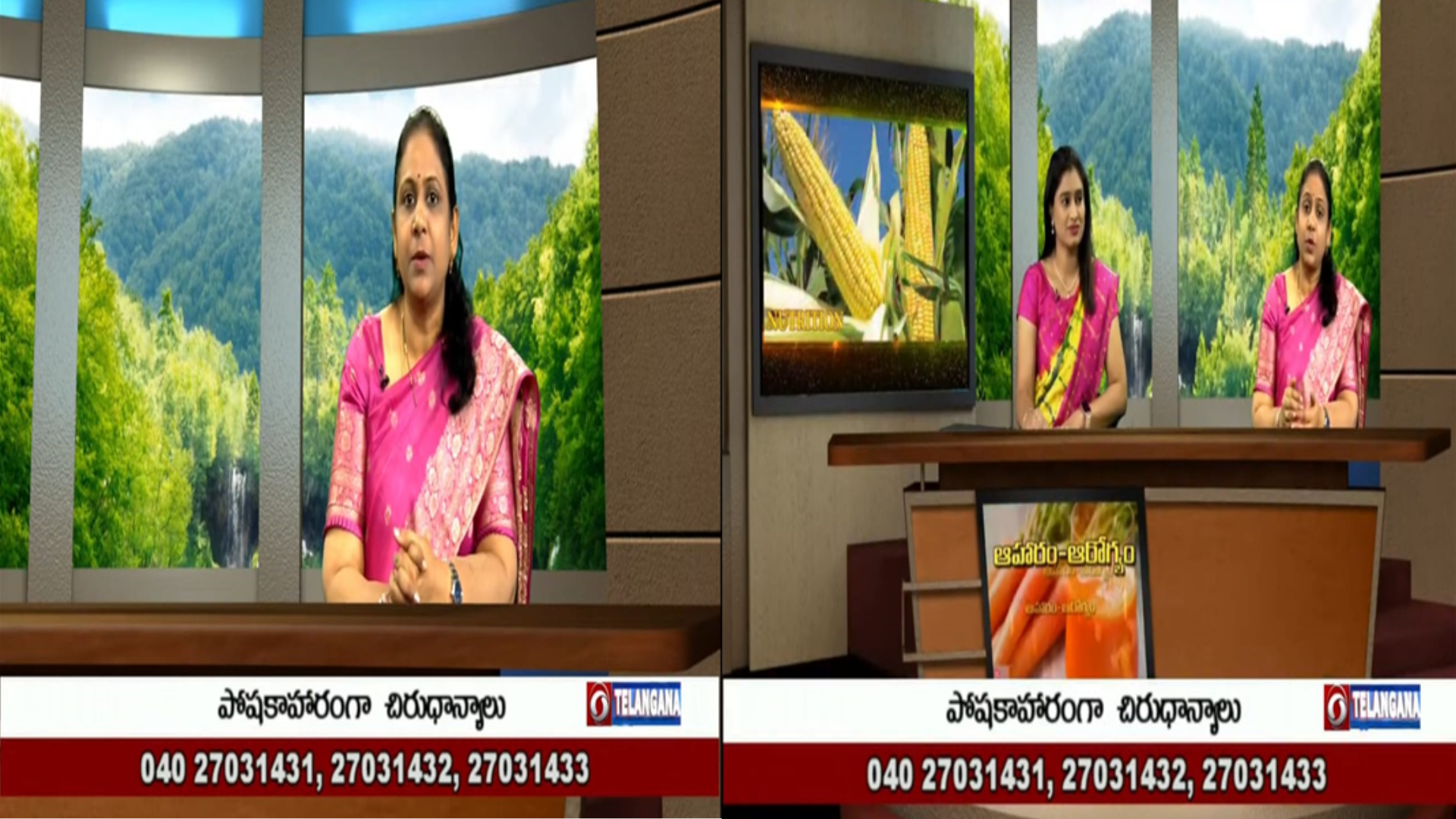Millets and Their Benefits
In a recent live dialing program on DD Yadgiri, Dietician Harita Shyam captivated audiences from the interiors of Telangana by shedding light on the nutritional powerhouse that is millets. This program aimed to connect with local communities, emphasizing the importance of incorporating locally grown millets into their daily diets. Harita Shyam's expertise and engaging manner made the session both informative and inspiring.
Understanding Millets
Harita Shyam began by introducing the concept of millets, explaining that they are a group of highly variable small-seeded grasses, widely grown around the world as cereal crops or grains for both human food and fodder. In Telangana, traditional millets such as ragi (finger millet), jowar (sorghum), and bajra (pearl millet) are staples that have been consumed for centuries.
Health Benefits of Millets
Nutrient-Rich: Harita highlighted that millets are packed with essential nutrients, including vitamins, minerals, fiber, and antioxidants. They are particularly rich in B vitamins, iron, calcium, and magnesium, making them a crucial addition to a balanced diet.
Gluten-Free: For individuals with gluten intolerance or celiac disease, millets provide an excellent alternative to wheat and other gluten-containing grains. They are naturally gluten-free, making them easy to digest and beneficial for gut health.
Low Glycemic Index: Millets have a low glycemic index, which means they release glucose slowly into the bloodstream. This helps in maintaining stable blood sugar levels, making them ideal for diabetics and those looking to manage their weight.
High Fiber Content: The high fiber content in millets aids in digestion, prevents constipation, and promotes a healthy gut microbiome. Fiber also contributes to satiety, helping in weight management by reducing hunger pangs.
Sustainable and Climate-Resilient: Harita emphasized the environmental benefits of millet. They require less water and are more resistant to pests and diseases compared to other cereal crops. This makes them a sustainable choice for farming, particularly in arid and semi-arid regions like Telangana.
Focus on Locally Grown Millets
Harita Shyam focused on three main types of locally grown millets:
Ragi (Finger Millet): Rich in calcium, ragi is known for its bone-strengthening properties. It is an excellent choice for growing children, pregnant women, and the elderly to maintain bone health.
Jowar (Sorghum): Jowar is high in protein, iron, and fiber. It is beneficial for individuals looking to boost their overall health, improve heart health, and manage diabetes.
Bajra (Pearl Millet): Bajra is packed with iron, making it effective in preventing and treating anemia. It also has high levels of magnesium, which is essential for heart health.
Audience Engagement
The live dialing format of the program allowed viewers from various parts of Telangana to call in with their questions. Harita Shyam patiently answered queries, providing practical advice on how to incorporate millets into daily meals, addressing common misconceptions, and suggesting delicious millet-based recipes.
Conclusion
The DD Yadgiri program featuring Dietician Harita Shyam was a resounding success, effectively raising awareness about the numerous health benefits of millet. By focusing on locally grown varieties like ragi, jowar, and bajra, the program underscored the importance of returning to traditional dietary practices that are both nutritious and sustainable.
As more people in Telangana and beyond become aware of the advantages of millets, there is hope for improved public health outcomes and a revival of sustainable agricultural practices. Harita Shyam’s insights have undoubtedly inspired many to embrace these ancient grains, fostering a healthier, more resilient community.
